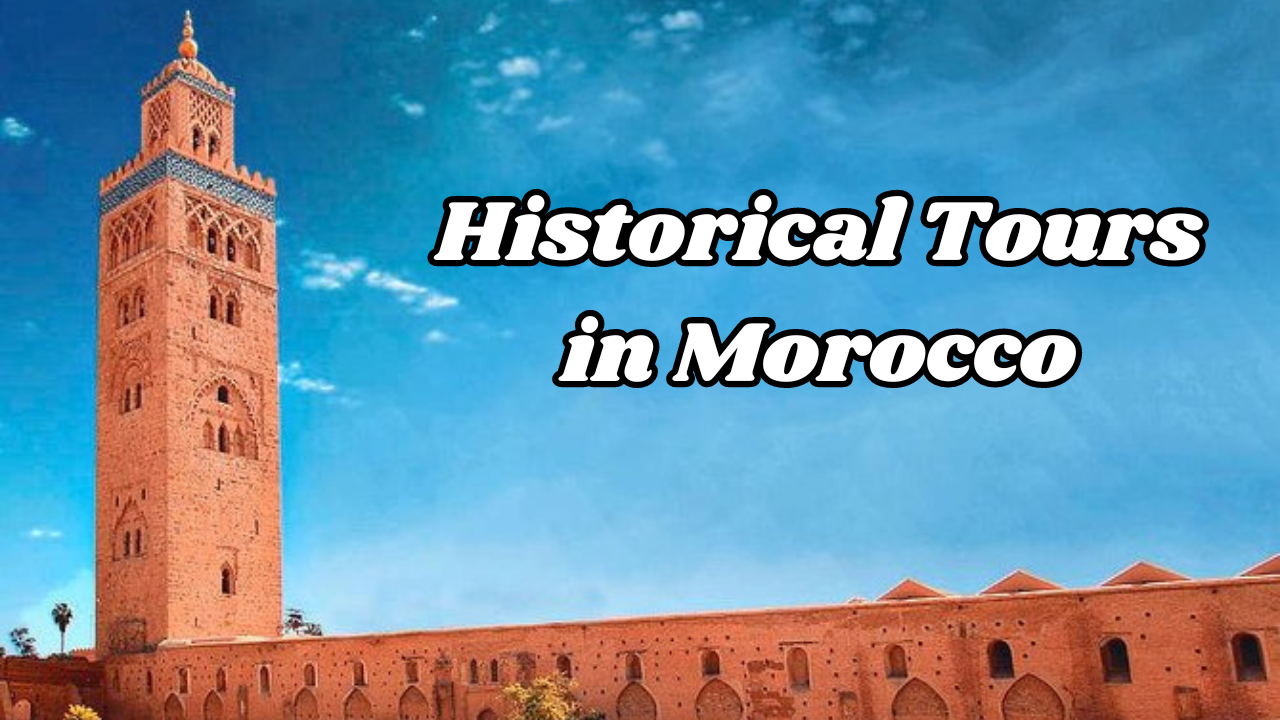Table of Contents
Introduction
Morocco, a land of diverse landscapes and vibrant cultures, has a history that stretches back thousands of years. Nestled in the northwestern corner of Africa, this country is a melting pot of Arab, Berber, and European influences, making it a unique and fascinating destination for travelers. From the bustling souks of Marrakech to the ancient ruins of Volubilis, Morocco offers a rich tapestry of historical and cultural experiences that captivate and inspire. Historical tours in Morocco provide a window into its storied past, allowing visitors to connect with the legacy of the civilizations that have shaped this remarkable country.
Brief Overview of Historical Tours in Morocco
Morocco’s history is a compelling chronicle of conquest, trade, and cultural exchange. The region has been inhabited since prehistoric times, with evidence of ancient human settlements dating back to the Paleolithic era. The indigenous Berber people, also known as Amazigh, have lived in Morocco for thousands of years, and their language and traditions continue to play a vital role in Moroccan identity. Throughout history, Morocco has been influenced by various civilizations, including the Phoenicians, Carthaginians, Romans, and Byzantines. In the 7th century, the arrival of Islam marked a significant turning point, leading to the establishment of powerful dynasties such as the Almoravids, Almohads, Merinids, and Saadians. Each dynasty contributed to the architectural and cultural landscape of Morocco, leaving behind an impressive legacy of mosques, palaces, and madrasas. The Alaouite dynasty, which still reigns today, began in the 17th century and has overseen periods of both stability and turmoil. Morocco’s strategic location at the crossroads of Europe, Africa, and the Middle East has made it a crucial hub for trade and diplomacy. This rich historical mosaic is reflected in Morocco’s cities, where ancient medinas coexist with modern infrastructure, creating a dynamic and ever-evolving cultural heritage.
Importance of Historical Tours in Morocco
Historical tours are an essential means of delving into Morocco’s rich heritage, offering travelers a deeper understanding of the country’s past and its impact on contemporary society. These tours provide context to the historical sites and monuments, bringing to life the stories of the people who built and inhabited them. Visiting historical cities like Marrakech, Fes, Rabat, and Meknes allows travelers to witness firsthand the architectural grandeur and intricate craftsmanship that define Moroccan art and design. Exploring ancient ruins such as Volubilis and Lixus offers insight into Morocco’s role in the broader narrative of the Mediterranean world. Moreover, historical tours often include interactions with local communities, providing opportunities to learn about traditional customs, music, dance, and cuisine. This immersive experience fosters a greater appreciation for Morocco’s diverse cultural heritage and helps preserve these traditions for future generations.
Major Historical Cities and Sites
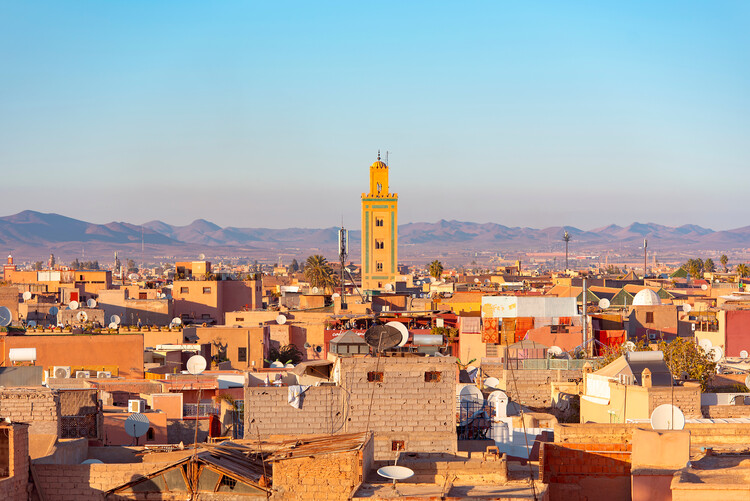
Marrakech
Marrakech, known as the “Red City” due to the hue of its buildings and ramparts, is one of Morocco’s most iconic destinations. Founded in 1062 by the Almoravid dynasty, it has long been a center of trade, culture, and religion. The city’s vibrant energy is palpable in its bustling souks, where the scents of spices and the sounds of haggling merchants fill the air. Marrakech is a city of contrasts, where traditional Moroccan life coexists with modern amenities. Its historical significance and rich cultural heritage make it a must-visit for anyone seeking to understand the soul of Morocco.
The Medina and Jemaa el-Fnaa Square
The Medina of Marrakech, a UNESCO World Heritage Site, is a labyrinth of narrow alleys and bustling markets. At its heart lies Jemaa el-Fnaa Square, one of the most famous public spaces in the world. By day, the square is a lively hub of activity, with snake charmers, henna artists, and food vendors vying for attention. As night falls, it transforms into an open-air food court, with dozens of stalls serving traditional Moroccan dishes. Jemaa el-Fnaa is more than just a market; it is a living, breathing cultural center that embodies the spirit of Marrakech.
Koutoubia Mosque
Dominating the skyline of Marrakech, the Koutoubia Mosque is a masterpiece of Islamic architecture. Built in the 12th century during the reign of the Almohad Caliph Yaqub al-Mansur, it is renowned for its stunning minaret, which stands at 77 meters tall. The mosque’s design, characterized by intricate geometric patterns and ornate calligraphy, has influenced Islamic architecture throughout the Maghreb. Although non-Muslims are not permitted to enter, the Koutoubia Mosque remains a significant landmark and a symbol of Marrakech’s rich religious heritage.
Saadian Tombs
The Saadian Tombs are a testament to the architectural and artistic achievements of the Saadian dynasty, which ruled Morocco in the 16th and 17th centuries. Rediscovered in 1917 after being sealed off for centuries, the tombs are located near the Kasbah Mosque in the medina. The mausoleum complex is adorned with exquisite marble, intricate tile work, and finely carved cedar wood, reflecting the opulence of the Saadian era. The tombs house the remains of several Saadian rulers, including Sultan Ahmed al-Mansur, making them a significant historical and cultural site.
Bahia Palace
Bahia Palace, meaning “Brilliance,” is a stunning example of 19th-century Moroccan architecture. Built by Si Moussa, a former slave who rose to become a powerful vizier, the palace was later expanded by his son, Bou Ahmed. The palace’s design showcases the best of Moroccan craftsmanship, with intricately carved stucco, vibrant zellige tilework, and beautiful gardens. Each room and courtyard in the Bahia Palace tells a story of the opulent lifestyle of the Moroccan elite during the 19th century. Today, it serves as a museum, offering visitors a glimpse into the grandeur of Morocco’s historical architecture.
Fes
Fes, often referred to as the cultural and spiritual heart of Morocco, is one of the country’s most historically significant cities. Founded in the 9th century by Idris I, it has long been a center of Islamic scholarship and culture. The city is divided into two main parts: Fes el-Bali (the Old Medina) and Fes el-Jdid (the New Medina), with the former being a UNESCO World Heritage Site. Fes is renowned for its well-preserved medieval architecture, bustling souks, and vibrant arts scene. Its intricate maze of narrow streets and alleys transports visitors back in time, offering a glimpse into the rich history and heritage of Morocco.
Fes el-Bali (Old Medina)
Fes el-Bali, the oldest part of Fes, is a sprawling, labyrinthine medina that dates back to the 9th century. It is one of the world’s largest car-free urban areas, with its narrow, winding streets designed for pedestrians and donkeys rather than modern vehicles. The medina is home to numerous historic sites, including mosques, madrasas, and palaces. Its bustling markets, or souks, are filled with traditional crafts, textiles, and spices, offering a sensory overload of sights, sounds, and smells. Navigating Fes el-Bali is like stepping into a living museum, where every corner reveals a piece of Morocco’s past.
Al Quaraouiyine University
Founded in 859 by Fatima al-Fihri, Al Quaraouiyine University is the oldest continuously operating university in the world. Located in Fes el-Bali, it has been a renowned center of Islamic learning for over a millennium. The university’s mosque, one of the largest in Africa, is a stunning example of Moroccan-Andalusian architecture, featuring intricate tilework, carved wood, and beautiful calligraphy. Al Quaraouiyine has attracted scholars from across the Islamic world, making significant contributions to fields such as theology, law, and natural sciences. Today, it remains a vital part of Fes’s educational and cultural landscape.
Bou Inania Madrasa
The Bou Inania Madrasa, established in the mid-14th century by the Marinid Sultan Abu Inan Faris, is one of the most beautiful and well-preserved madrasas in Morocco. Located in the heart of Fes el-Bali, it served both as a school and a mosque. The madrasa is renowned for its exquisite architecture, featuring elaborate stucco work, carved cedar wood, and stunning zellige tile mosaics. Its central courtyard, with a marble fountain and intricately decorated walls, is a masterpiece of Moroccan craftsmanship. The Bou Inania Madrasa is a testament to the Marinid dynasty’s commitment to education and the arts.
The Tanneries
The tanneries of Fes, particularly the Chouara Tannery, are among the city’s most iconic and enduring sights. These tanneries, dating back to the medieval period, continue to use traditional methods to produce high-quality leather. The process involves soaking hides in a mixture of water, limestone, and pigeon droppings to remove hair and flesh, followed by dyeing them in large stone vats filled with natural pigments. The tanneries are a vibrant and colorful sight, with vats of red, blue, yellow, and green dyes creating a striking mosaic. Visitors can observe the process from nearby terraces, gaining insight into an ancient craft that remains a vital part of Fes’s economy and culture.
Rabat
Rabat, the capital city of Morocco, is a fascinating blend of historic charm and modern sophistication. Founded in the 12th century by the Almohad dynasty, Rabat has grown into a vibrant political and administrative center while preserving its rich cultural heritage. The city boasts wide boulevards, lush gardens, and a picturesque coastline along the Atlantic Ocean. Rabat’s historical sites, many of which are UNESCO World Heritage Sites, offer glimpses into Morocco’s storied past. The city’s medina, with its bustling markets and traditional craftsmanship, contrasts beautifully with its contemporary districts, making Rabat a compelling destination for travelers.
Hassan Tower
The Hassan Tower is one of Rabat’s most iconic landmarks, symbolizing the city’s historical and architectural heritage. Commissioned by the Almohad Caliph Yaqub al-Mansur in the 12th century, the tower was intended to be the minaret of a grand mosque that would surpass all others in size. However, construction halted upon al-Mansur’s death, leaving the tower incomplete. Despite this, the Hassan Tower stands at 44 meters tall, showcasing intricate Almohad design with its red sandstone and ornate geometric patterns. The surrounding area, dotted with the ruins of the intended mosque’s columns, adds to the site’s historical ambiance and significance.
Kasbah of the Udayas
Perched on a hill overlooking the Bou Regreg River, the Kasbah of the Udayas is a historical fortress that offers breathtaking views and a serene escape from the bustling city. Built during the reign of the Almohads in the 12th century, the kasbah has been a strategic military site and a vibrant residential area over the centuries. Its narrow, winding streets are lined with charming white-and-blue houses, evoking a picturesque Mediterranean village. The Andalusian Gardens within the kasbah provide a peaceful retreat, while the Kasbah Mosque, one of the oldest in Rabat, adds to the site’s historical allure. The Kasbah of the Udayas is a testament to Rabat’s layered history and architectural beauty.
Mausoleum of Mohammed V
The Mausoleum of Mohammed V is a magnificent monument dedicated to one of Morocco’s most revered leaders. Completed in 1971, the mausoleum houses the tombs of King Mohammed V, who led Morocco to independence from French colonial rule, and his sons, King Hassan II and Prince Moulay Abdallah. The building’s architectural design reflects traditional Moroccan craftsmanship, with its white marble exterior, green tiled roof, and intricate zellige mosaics. Inside, the mausoleum features stunning stucco work, carved cedar wood, and a beautifully decorated dome. The adjacent Hassan Tower and the mausoleum together form a significant historical and cultural complex in Rabat.
Chellah Necropolis
The Chellah Necropolis, located on the outskirts of Rabat, is an ancient site that offers a captivating journey through Morocco’s layered history. Originally a Phoenician and later a Roman settlement known as Sala Colonia, the site was transformed into a necropolis and religious complex by the Marinid dynasty in the 14th century. The Chellah is surrounded by fortified walls, within which lie the ruins of Roman structures, Marinid tombs, and the remnants of a medieval mosque. The site is also home to lush gardens and an abundance of storks that nest in the ruins, adding a unique charm to the atmosphere. Exploring the Chellah Necropolis provides a fascinating glimpse into the various civilizations that have influenced Morocco’s heritage.
Meknes
Meknes, often referred to as the “Versailles of Morocco,” is a city that seamlessly blends historical grandeur with modern vitality. Founded in the 11th century by the Almoravids, Meknes gained prominence in the 17th century when Sultan Moulay Ismail made it his capital. The city is renowned for its impressive architectural heritage, including grand palaces, monumental gates, and expansive gardens. Meknes’s medina, a UNESCO World Heritage Site, is filled with bustling souks, traditional craftsmanship, and vibrant local culture. The city’s rich history and unique charm make it a fascinating destination for those interested in exploring Morocco’s imperial past.
Bab Mansour
Bab Mansour, one of the most iconic landmarks in Meknes, is a testament to the city’s architectural splendor during the reign of Sultan Moulay Ismail. Completed in 1732, this monumental gate is considered one of the finest examples of Moroccan craftsmanship. Named after its architect, El-Mansour, Bab Mansour features intricate zellige tilework, beautifully carved inscriptions, and massive, ornate doors. The gate served as the main entrance to the imperial city, symbolizing the power and grandeur of Meknes. Today, Bab Mansour stands as a remarkable piece of history, drawing visitors with its stunning design and historical significance.
El Hedim Square
El Hedim Square, located in the heart of Meknes, is a lively and bustling public space that serves as the city’s social and cultural hub. The square, which means “the square of destruction,” was created by Sultan Moulay Ismail to host grand ceremonies and public gatherings. Today, El Hedim Square is filled with food stalls, street performers, and vendors selling traditional crafts. It offers a vibrant atmosphere where locals and tourists alike can experience the everyday life of Meknes. The square’s location, adjacent to Bab Mansour and the entrance to the medina, makes it a central point for exploring the city’s historical and cultural treasures.
Royal Stables and Granaries
The Royal Stables and Granaries of Meknes, known as Heri es-Souani, are impressive remnants of Sultan Moulay Ismail’s ambitious building projects. These structures were designed to house the sultan’s 12,000 horses and store vast quantities of grain and provisions for the city. The granaries, with their massive walls and ingenious ventilation system, ensured that food supplies remained fresh and secure. The stables, constructed with equally imposing architecture, highlight the sultan’s wealth and the importance of his cavalry. Visiting the Royal Stables and Granaries offers a fascinating insight into the logistics and grandeur of the imperial court in Meknes.
Moulay Ismail Mausoleum
The Moulay Ismail Mausoleum is a significant religious and historical site in Meknes, serving as the final resting place of Sultan Moulay Ismail, one of Morocco’s most powerful and influential rulers. Built during his reign in the 18th century, the mausoleum reflects the sultan’s architectural vision and his contributions to Moroccan history. The structure features exquisite Moroccan craftsmanship, with ornate tilework, finely carved wood, and beautiful stucco decorations. The mausoleum is still an active religious site, attracting pilgrims and visitors who come to pay their respects to the sultan. Its serene atmosphere and stunning design make the Moulay Ismail Mausoleum a must-visit landmark in Meknes.
Ancient Ruins and Archaeological Sites
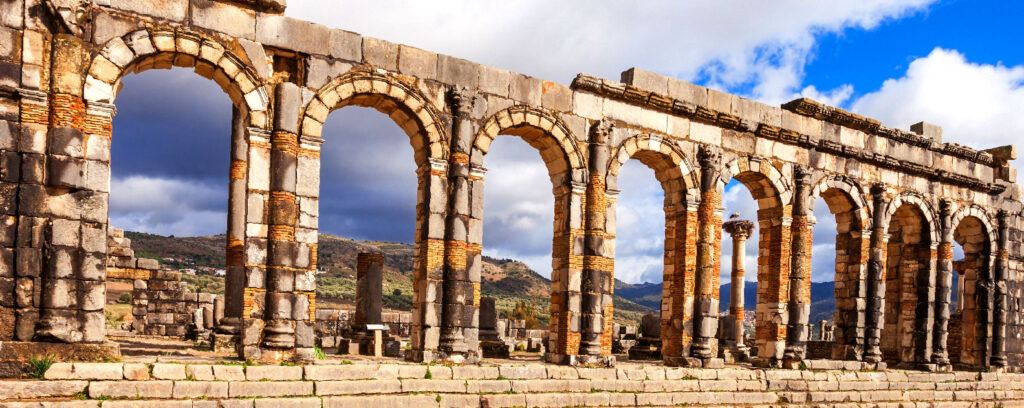
Volubilis
Volubilis, a UNESCO World Heritage Site, is one of Morocco’s most impressive and well-preserved ancient Roman ruins. Located near the city of Meknes, this archaeological site offers a captivating glimpse into the history and culture of the Roman Empire in North Africa. Volubilis was an important administrative center and a thriving agricultural hub, known for its fertile lands that produced olive oil, grain, and other commodities. The site covers an area of about 40 hectares, featuring extensive ruins that reflect its historical significance and the architectural prowess of the Roman era.
History and Significance
The history of Volubilis dates back to the 3rd century BCE when it was initially settled by the indigenous Berber people. It later became a Phoenician and then a Carthaginian settlement before being incorporated into the Roman Empire around 40 CE. Under Roman rule, Volubilis flourished as a prosperous city, benefiting from its strategic location on the southwestern frontier of the empire. The city’s prosperity peaked in the 2nd and 3rd centuries CE, during which time it saw the construction of many grand buildings and monuments.
Volubilis was the administrative center of the Roman province of Mauretania Tingitana, serving as a key outpost for trade and military activities. The city continued to be inhabited after the fall of the Roman Empire, serving as the capital of the Idrisid dynasty in the 8th century. However, it eventually fell into decline and was abandoned after the 11th century. Despite its abandonment, Volubilis remained a symbol of Morocco’s rich and diverse historical heritage, attracting archaeologists and historians who have worked to uncover and preserve its ruins.
Major Ruins and Structures
The ruins of Volubilis are a testament to the grandeur of Roman urban planning and architecture. Among the most notable structures are:
- The Basilica: This grand building was the administrative heart of Volubilis, where legal and civic matters were conducted. Its impressive remains include towering columns and a large central hall, showcasing the architectural sophistication of the time.
- The Capitol: Dedicated to the triad of Roman gods—Jupiter, Juno, and Minerva—the Capitol was the city’s main temple. Its ruins include a massive staircase, a podium, and fragments of decorative sculptures.
- The Triumphal Arch: Erected in 217 CE to honor the Roman Emperor Caracalla and his mother Julia Domna, the Triumphal Arch is one of Volubilis’s most iconic landmarks. Standing at 8 meters high, it features intricate carvings and inscriptions that celebrate the emperor’s achievements.
- The House of Orpheus: One of several luxurious villas in Volubilis, the House of Orpheus is renowned for its stunning mosaics. These intricate artworks depict scenes from Roman mythology, including Orpheus taming animals with his music, offering a glimpse into the artistic and cultural life of the city’s elite.
- The Forum: The public square of Volubilis, the Forum was the center of political, commercial, and social activities. It was surrounded by important public buildings and provided a space for gatherings and markets.
- The Baths: The remains of the public baths, including the well-preserved caldarium (hot room), tepidarium (warm room), and frigidarium (cold room), highlight the sophisticated engineering and daily life in Volubilis.
Lixus
Lixus, an ancient archaeological site located near the town of Larache in northern Morocco, is one of the country’s most historically significant and lesser-known treasures. Situated on the banks of the Loukkos River, Lixus was initially established by the Phoenicians around the 7th century BCE and later became a prominent Carthaginian and Roman settlement. The site’s strategic position along the Atlantic coast made it an important hub for trade and cultural exchange between different Mediterranean civilizations. Over the centuries, Lixus witnessed a rich tapestry of historical events and developments, contributing to its diverse and complex heritage. Today, Lixus stands as a testament to the enduring legacy of these ancient civilizations and offers valuable insights into the region’s past.
Overview of the Ancient Site
Lixus was one of the earliest urban centers in Morocco and played a crucial role in the region’s history for nearly a millennium. The Phoenicians established it as a trading post, exploiting its strategic location for commerce with the indigenous Berber populations and other Mediterranean traders. When the Carthaginians took control, Lixus continued to thrive, benefiting from the broader Carthaginian trade network. The city’s importance further increased under Roman rule, starting around the 1st century BCE, when it became part of the Roman province of Mauretania Tingitana. Lixus developed into a flourishing city with advanced infrastructure, including temples, public baths, and industrial facilities, particularly for the production of the prized garum (fish sauce), which was a major export to Rome. The city’s decline began in the late antiquity period, and it was eventually abandoned in the early Islamic era, leaving behind a wealth of archaeological evidence.
Key Features and Discoveries
The archaeological site of Lixus encompasses a wide range of ruins and artifacts that reflect its diverse historical influences. Among the key features is the Roman amphitheater, one of the oldest in Africa, which could accommodate several thousand spectators. This amphitheater is a testament to the cultural and social life in Lixus, where public spectacles and entertainment were an integral part of the community. Another significant feature is the temple complex dedicated to the god Melqart, later associated with Hercules in Roman mythology. The presence of this temple highlights the religious and cultural continuity from the Phoenician to the Roman period. Excavations have revealed intricate mosaics and inscriptions that provide insights into the religious practices and artistic achievements of the city’s inhabitants. One of the most remarkable discoveries at Lixus is the extensive industrial area for the production of garum, a fermented fish sauce that was highly prized in Roman cuisine. The site contains well-preserved vats and tanks used for processing fish, indicating the scale of production and the importance of this industry to the city’s economy. The remains of other facilities, such as olive presses and storage warehouses, further illustrate the city’s economic activities and trade connections.
Berber Heritage and Cultural Tours
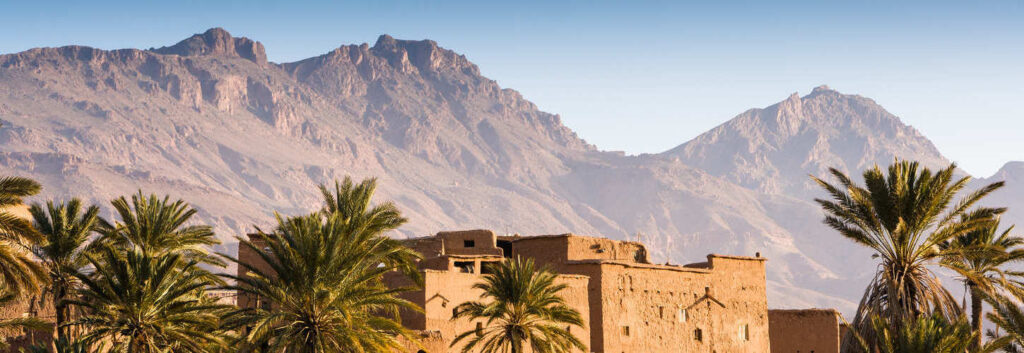
Atlas Mountains
The Atlas Mountains, stretching across North Africa for approximately 2,500 kilometers, are a magnificent and diverse mountain range that plays a crucial role in the geography and culture of Morocco. This mountain range is divided into several subranges, including the High Atlas, Middle Atlas, and Anti-Atlas, each offering distinct landscapes and ecosystems. The High Atlas, home to North Africa’s highest peak, Mount Toubkal, is renowned for its rugged terrain, deep gorges, and snow-capped summits. These mountains are not only a natural barrier but also a source of life, providing water to the arid regions through their extensive river systems. The Atlas Mountains are a haven for outdoor enthusiasts, offering opportunities for trekking, climbing, and exploring picturesque valleys and traditional Berber villages nestled in their folds.
Berber Villages
Scattered throughout the Atlas Mountains are numerous Berber villages, each with its unique charm and character. These villages, often perched on steep hillsides or nestled in lush valleys, provide a glimpse into a way of life that has remained largely unchanged for centuries. The architecture of Berber villages is distinct, with houses constructed from local materials such as stone and clay, blending harmoniously with the surrounding landscape. Terraced fields, used for agriculture, are a common sight, showcasing the ingenuity of the Berber people in adapting to the challenging mountainous terrain. Visiting these villages allows travelers to experience the warmth and hospitality of the Berber community, learn about their traditional crafts such as carpet weaving and pottery, and enjoy breathtaking views of the mountains and valleys.
Traditional Berber Culture and Customs
Traditional Berber culture and customs are rich and diverse, reflecting a deep connection to the land and a resilient way of life that has endured through millennia. The Berbers, or Amazigh as they prefer to be called, are the indigenous people of North Africa, and their culture is characterized by a strong sense of community, oral traditions, and a unique language, Tamazight, which has several dialects. Berber customs are closely tied to their agrarian lifestyle, with seasonal festivals celebrating the harvest and important life events such as weddings and births.
Sahara Desert
The Sahara Desert, the largest hot desert in the world, spans across North Africa, including vast stretches of Morocco. Its name, derived from the Arabic word for “desert,” aptly describes its formidable landscape of sand dunes, rocky plateaus, and barren plains. The Moroccan Sahara, known for its Erg Chebbi and Erg Chigaga dunes, offers a surreal and awe-inspiring experience. Travelers to the Sahara can witness spectacular sunrises and sunsets, ride camels across the dunes, and camp under the starry night sky. Despite its harsh environment, the Sahara supports a surprising variety of flora and fauna adapted to desert life, including date palms, acacia trees, and desert foxes.
Nomadic Berber Lifestyle
The nomadic Berber lifestyle, traditionally practiced by some communities in the Sahara Desert and other remote regions of Morocco, is deeply rooted in a symbiotic relationship with nature and a spirit of resilience. Nomadic Berbers, also known as Bedouins, move seasonally with their herds of goats, sheep, and camels in search of grazing grounds and water sources. This lifestyle is not only a means of survival but also a cultural practice that has been passed down through generations. Nomadic Berbers live in traditional tents woven from goat hair, which provide shelter from the harsh desert climate while remaining portable.
Historic Routes and Desert Forts
Historic routes and desert forts crisscross the Moroccan Sahara, serving as vital trade routes and strategic military outposts throughout history. One of the most famous routes is the Trans-Saharan Trade Route, which connected sub-Saharan Africa with the Mediterranean world, facilitating the exchange of goods, culture, and ideas. Caravans of camels laden with gold, ivory, salt, and spices traversed these routes, stopping at fortified trading posts or ksars along the way. These ksars, such as Ait Benhaddou near Ouarzazate, served as communal living quarters and defensive structures for travelers and local communities.
Historical Museums and Educational Centers
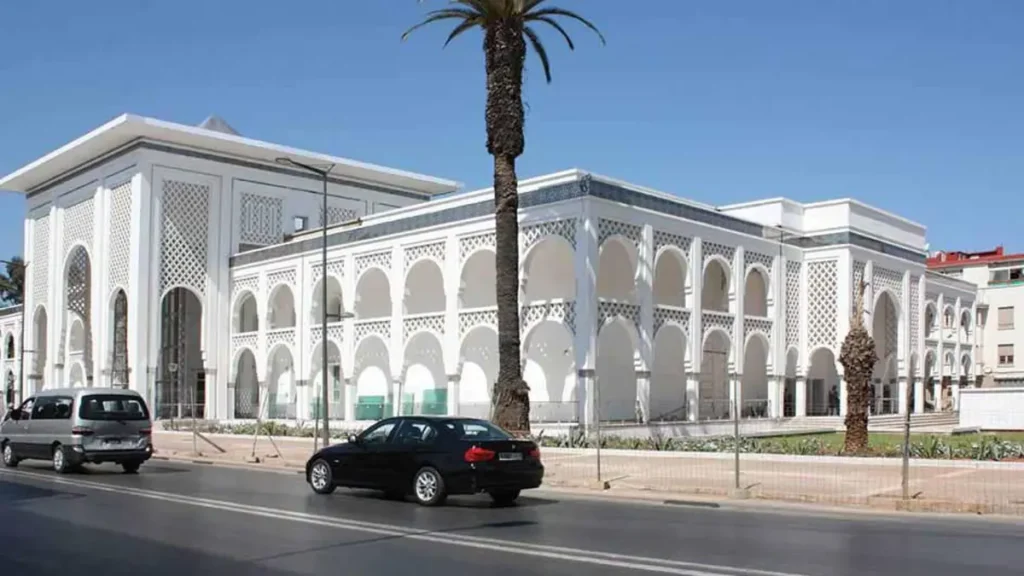
Museum of Moroccan Judaism (Casablanca)
The Museum of Moroccan Judaism in Casablanca is a cultural institution dedicated to preserving and celebrating the rich heritage of Morocco’s Jewish community. Located in the heart of Casablanca, the museum provides a comprehensive overview of Jewish history, traditions, and contributions to Moroccan society. Established in 1997, the museum aims to foster understanding and appreciation of Morocco’s diverse religious and cultural mosaic.
Jewish History in Morocco
Morocco has a long and storied Jewish history dating back over 2,000 years. Jewish communities first settled in Morocco during the Roman Empire and flourished under various dynasties, including the Almoravids, Almohads, and Merinids. Jews played a significant role in Morocco’s economic, cultural, and intellectual life, contributing to commerce, crafts, medicine, and diplomacy. Throughout history, Moroccan Jews lived peacefully alongside Muslim and Christian communities, preserving their religious practices, languages, and customs while enriching Moroccan culture with their traditions.
Exhibits and Collections
The Museum of Moroccan Judaism houses a diverse collection of artifacts, documents, and artworks that illustrate the vibrant history and culture of Moroccan Jews. The exhibits are organized thematically to showcase different aspects of Jewish life in Morocco, spanning from ancient times to the present day.
- Historical Artifacts: The museum displays ancient artifacts, including ceremonial objects, Torah scrolls, and religious garments used by Moroccan Jewish communities throughout history. These artifacts highlight the religious practices and rituals that have been preserved and passed down through generations.
- Daily Life and Traditions: Exhibits focus on the daily life and traditions of Moroccan Jews, featuring items such as household utensils, furniture, and traditional clothing. Visitors can learn about the customs, cuisine, and social customs that shaped Jewish life in Morocco.
- Synagogue Reconstruction: One of the museum’s highlights is a reconstructed synagogue that provides insight into the architectural style and religious practices of Moroccan Jewish communities. The synagogue features ornate decorations, intricate woodwork, and historical inscriptions that reflect the spiritual and communal life of Moroccan Jews.
- Photographic Archives: The museum houses a vast collection of photographs and archival documents documenting the history and experiences of Moroccan Jews. These images capture important events, community gatherings, and everyday life, offering a visual narrative of Moroccan Jewish heritage.
Dar Batha Museum (Fes)
The Dar Batha Museum, located in the heart of Fes el-Bali (Old Medina) in Fes, Morocco, is a testament to the city’s rich cultural heritage and architectural splendor. Originally built in the late 19th century during the reign of Sultan Moulay Hassan, the museum was constructed in a Hispano-Moorish style, featuring intricate tilework, carved cedar wood, and a serene courtyard garden. Dar Batha Museum was dedicated to showcasing Moroccan art and craftsmanship, housing a diverse collection of ceramics, textiles, jewelry, and woodwork from various regions of Morocco.
Andalusian Art and Artifacts
Andalusian art refers to the artistic traditions that flourished in Al-Andalus, the Iberian Peninsula under Islamic rule from the 8th to the 15th centuries. After the fall of Muslim rule in Spain, many Andalusian artists and craftsmen migrated to North Africa, particularly to cities like Fes in Morocco. The artistic style they brought with them, known for its intricate geometric patterns, vibrant colors, and skilled craftsmanship, deeply influenced Moroccan art and architecture. Andalusian art is characterized by its use of zellige (mosaic tilework), stucco carving, and calligraphy, which adorn mosques, palaces, and madrasas across Morocco.
Cultural Significance
Andalusian art and artifacts hold significant cultural and historical importance in Morocco, reflecting the centuries-old cultural exchange and synthesis between North Africa and Al-Andalus. The artistic techniques and motifs introduced by Andalusian craftsmen enriched Moroccan architecture and decorative arts, creating a distinctive blend of Islamic and local Berber influences. Andalusian art not only beautified religious and secular buildings but also served as a means of expressing religious devotion and cultural identity. Today, Andalusian art continues to be celebrated in Morocco through its preservation in museums, mosques, and private collections, serving as a reminder of the enduring legacy of Al-Andalus and its profound impact on Moroccan cultural heritage.
Marrakech Museum
The Marrakech Museum, housed in the 19th-century Dar Menebhi Palace in the heart of the medina, is a cultural institution that showcases the art, history, and heritage of Morocco. The palace itself is a masterpiece of Moroccan architecture, featuring intricate tilework, carved cedar wood, and serene courtyards adorned with fountains and lush gardens. Converted into a museum in 1997, the Marrakech Museum offers visitors a comprehensive journey through Moroccan artistry and history.
Moroccan Art and History
Moroccan art and history are deeply intertwined, reflecting the diverse influences and rich cultural heritage of the region. Moroccan artistry is characterized by its vibrant colors, geometric patterns, and exquisite craftsmanship, which are evident in various mediums such as ceramics, textiles, metalwork, and architecture. The history of Morocco spans millennia, from ancient Berber civilizations and Roman settlements to Islamic dynasties and European colonialism. Each era has left its mark on Moroccan art, architecture, and cultural practices, creating a tapestry of traditions that are celebrated and preserved in museums like the Marrakech Museum.
Unique Historical Experiences
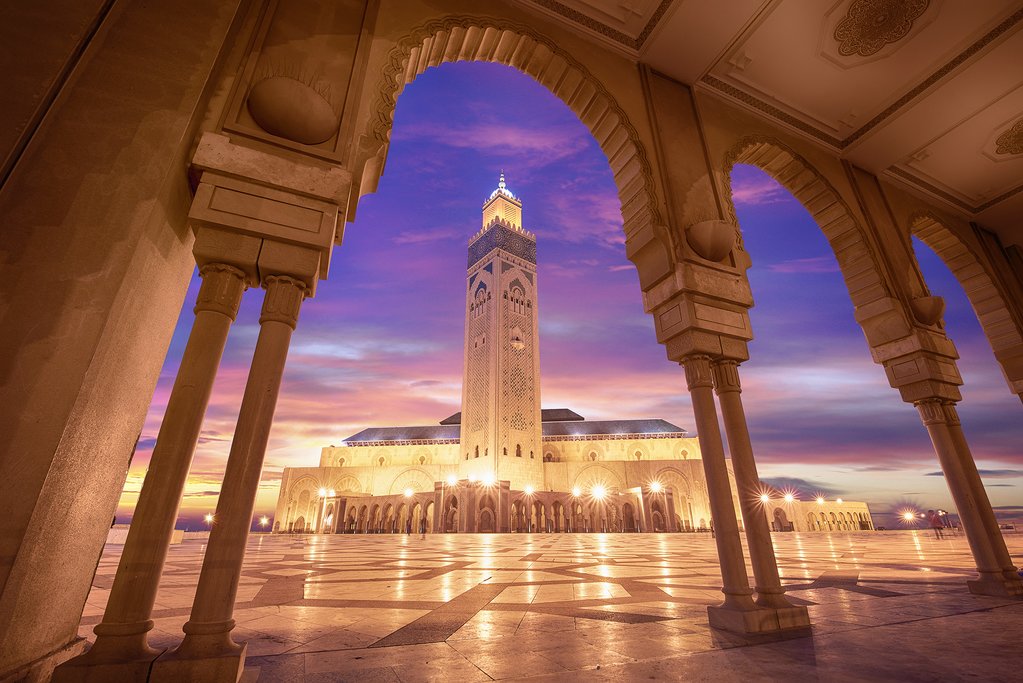
Traditional Moroccan Cuisine
Traditional Moroccan cuisine is renowned for its rich flavors, aromatic spices, and diverse influences from Berber, Arab, Andalusian, and Mediterranean culinary traditions. Characterized by slow-cooked tagines, couscous dishes, savory pastries, and refreshing mint tea, Moroccan cuisine reflects the country’s cultural diversity and geographical richness. The use of spices such as cumin, cinnamon, saffron, and ginger adds depth and complexity to dishes, while ingredients like olives, preserved lemons, and dried fruits impart a distinctive Moroccan flair. Meals are often communal affairs, with families and friends gathering to share hearty meals that celebrate seasonal ingredients and local specialties.
Culinary History and Influences
Moroccan cuisine has evolved over centuries, shaped by the region’s history, geography, and cultural exchanges. The Berbers, Morocco’s indigenous people, introduced staples such as couscous, which remains a cornerstone of Moroccan cuisine. Arab and Andalusian influences arrived with the spread of Islam in the 7th century, bringing with them new cooking techniques, ingredients, and flavors. The Moorish dynasty’s rule in Spain from the 8th to the 15th century further enriched Moroccan cuisine with ingredients like almonds, citrus fruits, and spices that were introduced through trade and cultural interactions. European colonization in the 19th and 20th centuries also left its mark, contributing ingredients such as tomatoes, potatoes, and coffee to Moroccan culinary repertoire.
Cooking Classes and Food Tours
Cooking classes and food tours offer immersive experiences for visitors to learn about Moroccan cuisine firsthand and explore its cultural significance. In cities like Marrakech, Fes, and Casablanca, cooking classes are often conducted in traditional riads or local homes, where participants can learn to prepare iconic dishes such as tagine, couscous, and pastilla under the guidance of skilled chefs. These classes typically begin with a visit to a local souk (market) to select fresh ingredients, spices, and herbs, providing insights into the importance of quality produce in Moroccan cooking.
Moroccan Hammams
Moroccan hammams, traditional public baths, are integral to the cultural and social fabric of Morocco, offering a rejuvenating and therapeutic experience rooted in centuries-old traditions. These communal bathing rituals hold historical significance and continue to be cherished as essential spaces for cleansing, relaxation, and social interaction in Moroccan society.
Historical Significance of Public Baths
Public baths, or hammams, have a long history in Morocco dating back to Roman and Islamic times. They served as vital social and hygienic centers where people from all walks of life would gather to cleanse themselves, socialize, and conduct business. Historically, hammams were not only places for physical cleanliness but also for spiritual purification, often featuring architectural elements like domes, vaulted ceilings, and intricate tilework that created a tranquil and luxurious atmosphere. During the Islamic Golden Age, hammams became centers of cultural exchange and intellectual discourse, where scholars and poets would convene to discuss ideas while enjoying the therapeutic benefits of steam baths and massages. Over time, hammams evolved to reflect local architectural styles and cultural practices, with each region in Morocco developing its unique bathing traditions.
Modern-Day Experience of Traditional Hammams
Today, traditional hammams continue to play a significant role in Moroccan life, offering locals and visitors alike a respite from the hustle and bustle of daily life. The experience typically begins with a visit to the changing area, where visitors receive a pestemal (a traditional cotton wrap) and a pair of wooden clogs. The first stage involves relaxing in a warm room to allow the body to acclimate to the heat. Next, visitors move to a hotter room, where attendants use black soap (savon noir) made from olive oil and eucalyptus to cleanse and exfoliate the skin. The soap softens the skin and prepares it for a vigorous scrubbing with a kessa glove to remove dead skin cells and impurities. This exfoliation process, known as gommage, leaves the skin smooth and rejuvenated.
Practical Information for Tourists
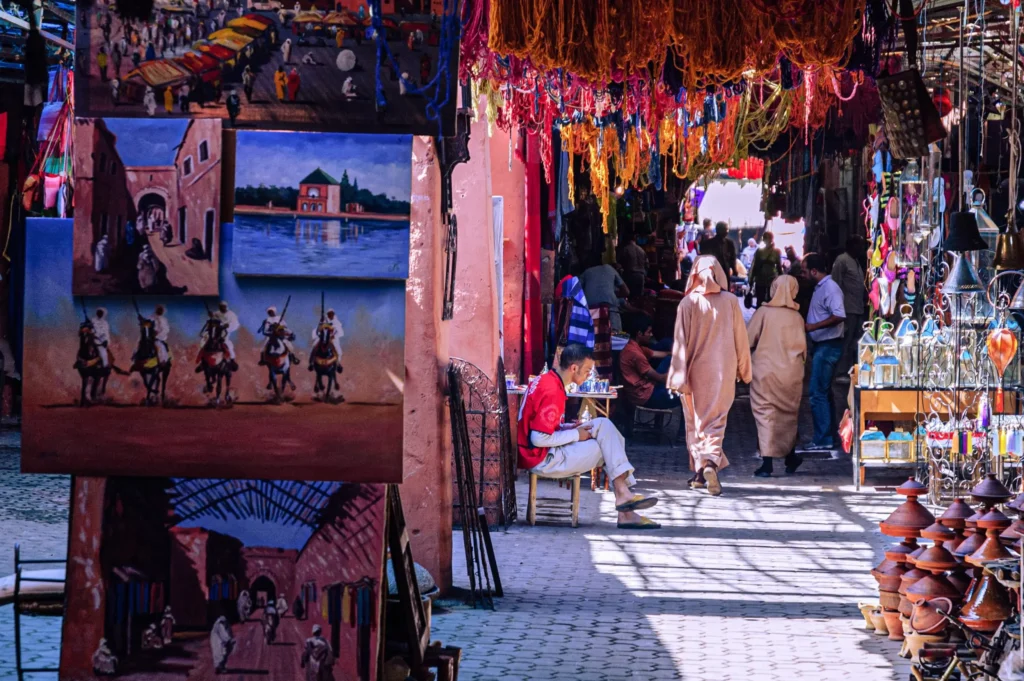
Best Times to Visit
Choosing the best time to visit Morocco depends largely on your preferences for weather and the type of experiences you seek. Spring (March to May) and autumn (September to November) are widely considered the optimal times to visit. During spring, Morocco bursts with blooming flowers and lush landscapes, making it perfect for exploring cities like Marrakech and Fes, as well as hiking in the Atlas Mountains. Autumn offers mild temperatures, clear skies, and vibrant autumn colors, ideal for outdoor activities and exploring desert regions without the intense summer heat.
Travel Tips and Safety
Traveling in Morocco is generally safe, but it’s essential to take common-sense precautions to ensure a smooth and enjoyable trip. Respect for local customs and traditions is crucial; Morocco is a conservative Muslim country, so dressing modestly, especially in rural areas and around religious sites, is advisable. Women should consider covering their shoulders and knees, and both men and women should avoid wearing revealing clothing.
Accommodation Options
Morocco offers a diverse range of accommodation options to suit every budget and preference, from luxurious riads to budget-friendly hostels and desert camps. Riads are traditional Moroccan houses converted into boutique hotels or guesthouses, typically located in the heart of medinas (old towns). They feature authentic Moroccan architecture, interior courtyards, and personalized service, providing a serene retreat amidst the bustling city.
Conclusion
Exploring Morocco through historical tours offers a captivating journey into the heart of its rich and diverse heritage. From ancient Roman ruins to intricate Islamic architecture and vibrant Berber traditions, Morocco’s historical sites provide a glimpse into centuries of cultural exchange and artistic expression. Each city and region reveals layers of history, from the imperial cities of Marrakech and Fes to the ancient trading posts of Rabat and Meknes, showcasing Morocco’s resilience and cultural continuity.
Recap of the Importance of Historical Tours in Morocco
Historical tours in Morocco are more than just visits to ancient monuments; they are gateways to understanding the country’s complex and multifaceted identity. These tours highlight Morocco’s role as a crossroads of civilizations, where Berber, Arab, Andalusian, and European influences have converged over millennia. By exploring historical sites such as the Medina of Marrakech, the Roman ruins of Volubilis, and the intricate mosaics of the Hassan II Mosque in Casablanca, visitors gain insights into Morocco’s artistic achievements, architectural prowess, and enduring cultural traditions.
Encouragement to Explore and Appreciate Morocco’s Rich Heritage
As you journey through Morocco, take the time to immerse yourself in its rich heritage and cultural tapestry. Wander through labyrinthine medinas bustling with artisans and traders, savor the flavors of traditional Moroccan cuisine, and marvel at the intricate craftsmanship of historic monuments. Engage with local communities, listen to their stories, and embrace the hospitality that Morocco is known for.
